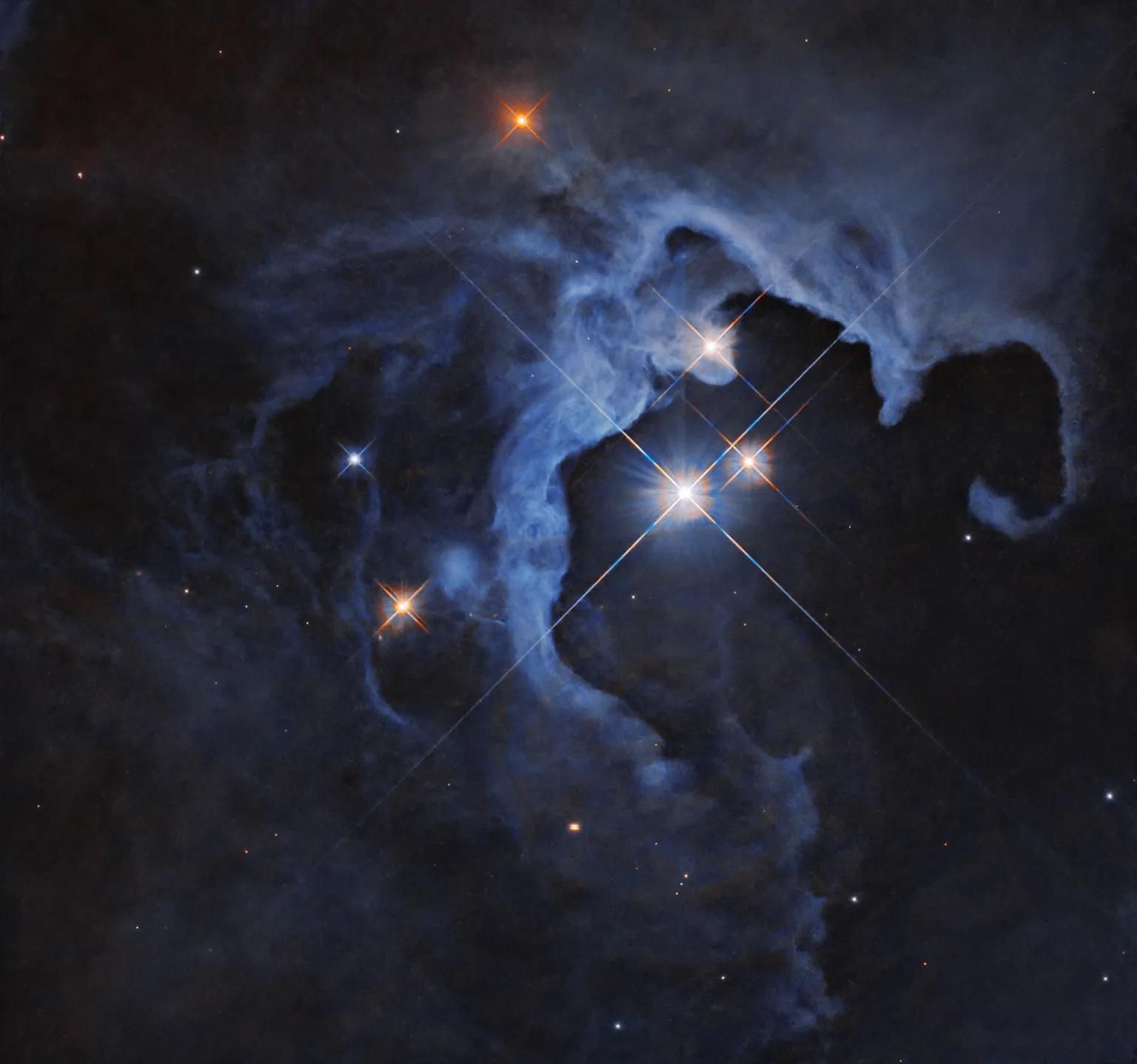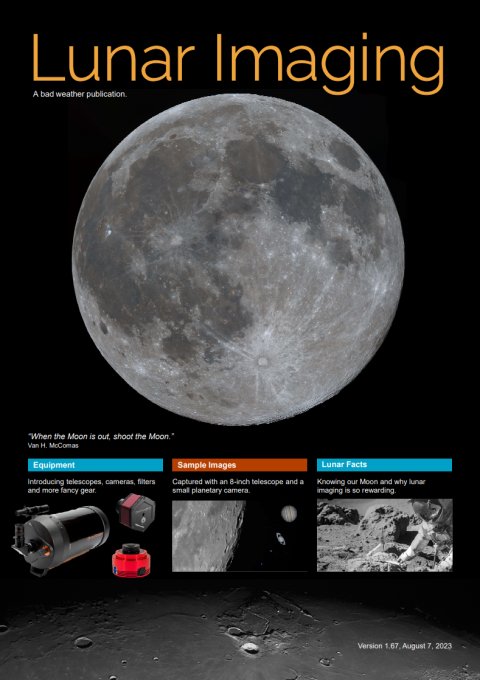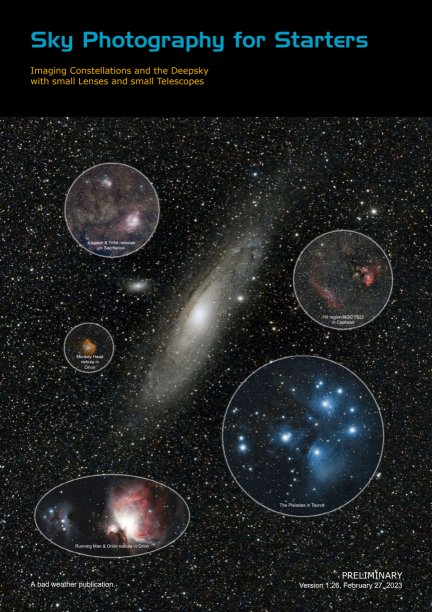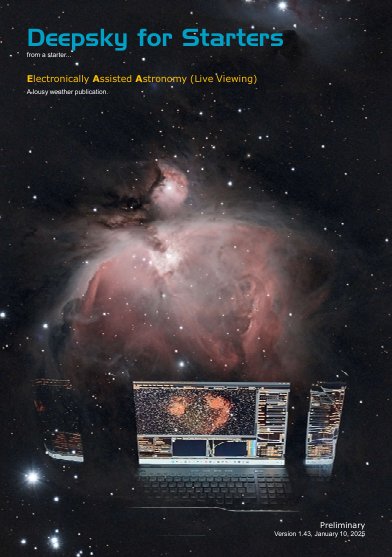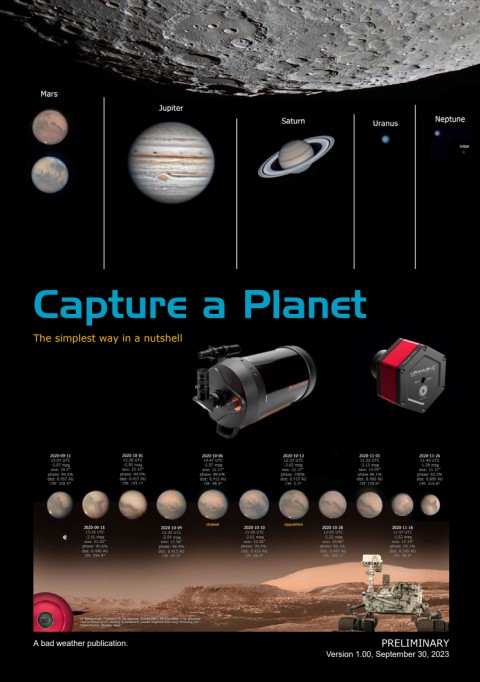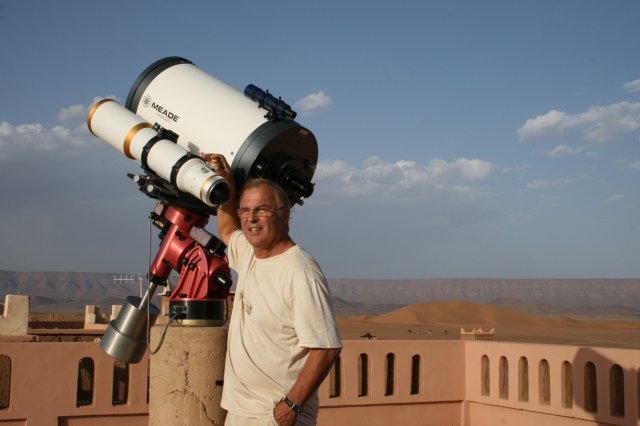Astronomical database with 3D simulations, visualizations, computations, review, articles, and more.
This website is not tailored to smartphones or other hand-held devices.

Sun & Moon Today
Current asteroid count is 1,351,400
Observable comet count is 1122
Current exoplanet count is 5630
Current longitude II of the GRS is 53°
Today Monitor
Planet Oppositions
Mars: January 16, 2025
Jupiter: December 7, 2024
Saturn: September 8, 2024
Uranus: November 17, 2024
Neptune: September 31, 2024
Greatest Elongation of Venus
Evening: January 10, 2025 at 47.2°E
Morning: June 1, 2025 at 45.9°W
Greatest Elongation of Mercury
Evening: December 4,2023 at 21.3°E
Morning: January 12, 2024 at 23.5°W
Evening: March 24, 2024 at 18.7°E
Morning: May 9, 2024 at 26.4°W
Evening: July 22, 2024 at 26.9°E
Morning: September 5, 2024 at 18.1°W
Evening: November 16, 2024 at 22.5°E
Morning: December 25, 2024 at 22.0°W
Comets to look out for:
Super Moons (full) 2024
Wednesday, September 18
Thursday, October 17
given for 00:00 UT
In Longitude (negative is western)
| Date | Size | Age | Angle | Phase |
|---|---|---|---|---|
| 14 Aug 2024 | 30.51' | 9.53 | -6.644° |  |
| 15 Aug 2024 | 30.96' | 10.53 | -6.946° |  |
| 16 Aug 2024 | 31.45' | 11.53 | -6.807° |  |
| 27 Aug 2024 | 31.47' | 22.53 | 6.648° |  |
| 28 Aug 2024 | 31.09' | 23.53 | 6.822° |  |
| 29 Aug 2024 | 30.74' | 24.53 | 6.717° |  |
| 11 Sep 2024 | 30.44' | 7.92 | -7.081° |  |
| 12 Sep 2024 | 30.88' | 8.92 | -7.442° |  |
| 13 Sep 2024 | 31.38' | 9.92 | -7.388° |  |
| 14 Sep 2024 | 31.90' | 10.92 | -6.884° |  |
| 23 Sep 2024 | 32.03' | 19.92 | 6.983° |  |
| 24 Sep 2024 | 31.54' | 20.92 | 7.577° |  |
| 25 Sep 2024 | 31.07' | 21.92 | 7.769° |  |
| 26 Sep 2024 | 30.64' | 22.92 | 7.584° |  |
| 27 Sep 2024 | 30.28' | 23.92 | 7.067° |  |
| 09 Oct 2024 | 30.41' | 6.22 | -6.872° |  |
| 10 Oct 2024 | 30.80' | 7.22 | -7.260° |  |
| 11 Oct 2024 | 31.24' | 8.22 | -7.306° |  |
| 12 Oct 2024 | 31.73' | 9.22 | -6.971° |  |
| 21 Oct 2024 | 32.22' | 18.22 | 6.835° |  |
| 22 Oct 2024 | 31.69' | 19.22 | 7.618° |  |
| 23 Oct 2024 | 31.17' | 20.22 | 7.933° |  |
| 24 Oct 2024 | 30.69' | 21.22 | 7.796° |  |
| 25 Oct 2024 | 30.28' | 22.22 | 7.257° |  |
| 08 Nov 2024 | 31.20' | 6.47 | -6.417° |  |
| 19 Nov 2024 | 31.78' | 17.47 | 6.845° |  |
| 20 Nov 2024 | 31.27' | 18.47 | 7.271° |  |
| 21 Nov 2024 | 30.79' | 19.47 | 7.223° |  |
| 22 Nov 2024 | 30.36' | 20.47 | 6.738° |  |
In Latitude (negative is southern)
| Date | Size | Age | Angle | Phase |
|---|---|---|---|---|
| 11 May 2024 | 31.43' | 2.86 | -6.465° |  |
| 12 May 2024 | 30.97' | 3.86 | -6.734° |  |
| 13 May 2024 | 30.54' | 4.86 | -6.649° |  |
| 26 May 2024 | 31.26' | 17.86 | 6.556° |  |
| 27 May 2024 | 31.51' | 18.86 | 6.627° |  |
| 08 Jun 2024 | 31.21' | 1.47 | -6.565° |  |
| 09 Jun 2024 | 30.83' | 2.47 | -6.570° |  |
| 22 Jun 2024 | 31.42' | 15.47 | 6.419° |  |
| 23 Jun 2024 | 31.72' | 16.47 | 6.548° |  |
| 05 Jul 2024 | 31.15' | 28.47 | -6.475° |  |
| 06 Jul 2024 | 30.85' | 0.04 | -6.542° |  |
| 20 Jul 2024 | 31.77' | 14.04 | 6.576° |  |
| 01 Aug 2024 | 31.01' | 26.04 | -6.516° |  |
| 02 Aug 2024 | 30.73' | 27.04 | -6.622° |  |
| 16 Aug 2024 | 31.45' | 11.53 | 6.680° |  |
| 17 Aug 2024 | 31.94' | 12.53 | 6.611° |  |
| 28 Aug 2024 | 31.09' | 23.53 | -6.608° |  |
| 29 Aug 2024 | 30.74' | 24.53 | -6.758° |  |
| 30 Aug 2024 | 30.43' | 25.53 | -6.567° |  |
| 12 Sep 2024 | 30.88' | 8.92 | 6.748° |  |
| 13 Sep 2024 | 31.38' | 9.92 | 6.795° |  |
| 14 Sep 2024 | 31.90' | 10.92 | 6.467° |  |
| 24 Sep 2024 | 31.54' | 20.92 | -6.608° |  |
| 25 Sep 2024 | 31.07' | 21.92 | -6.837° |  |
| 26 Sep 2024 | 30.64' | 22.92 | -6.706° |  |
| 09 Oct 2024 | 30.41' | 6.22 | 6.695° |  |
| 10 Oct 2024 | 30.80' | 7.22 | 6.831° |  |
| 11 Oct 2024 | 31.24' | 8.22 | 6.620° |  |
| 21 Oct 2024 | 32.22' | 18.22 | -6.408° |  |
| 22 Oct 2024 | 31.69' | 19.22 | -6.763° |  |
| 23 Oct 2024 | 31.17' | 20.22 | -6.728° |  |
| 05 Nov 2024 | 30.24' | 3.47 | 6.535° |  |
| 06 Nov 2024 | 30.52' | 4.47 | 6.723° |  |
| 07 Nov 2024 | 30.84' | 5.47 | 6.580° |  |
| 18 Nov 2024 | 32.26' | 16.47 | -6.549° |  |
| 19 Nov 2024 | 31.78' | 17.47 | -6.638° |  |
| 03 Dec 2024 | 30.57' | 1.74 | 6.584° |  |
| 04 Dec 2024 | 30.83' | 2.74 | 6.475° |  |
| 16 Dec 2024 | 32.04' | 14.74 | -6.545° |  |
| 30 Dec 2024 | 30.69' | 28.74 | 6.543° |  |
| 31 Dec 2024 | 31.00' | 0.07 | 6.472° |  |
Source: NASA/GSFC
Lunar Calendar 2024
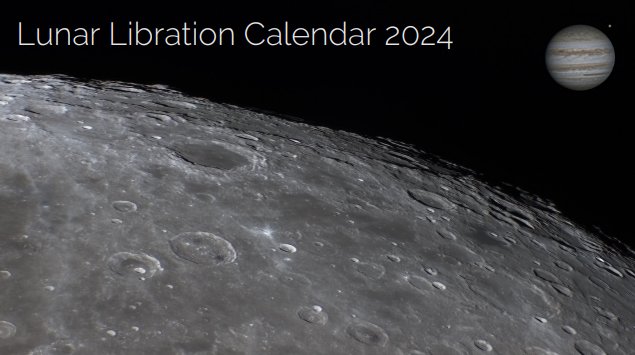 Lunar Libration Calendar2024 (PDF 11.2 MB)
Lunar Libration Calendar 2023 (PDF 3.3 MB)
Lunar Libration Calendar2024 (PDF 11.2 MB)
Lunar Libration Calendar 2023 (PDF 3.3 MB)
Latest STScI News Release
Dr. John F. Wu Receives 2024 Maryland Outstanding Young Scientist AwardMay 15, 2024

A man at image center with many green shrubs and trees in the background.
Source: Space Telescope Science Institute
Tonight's Sky
May Constellations
In May, we are looking away from the crowded, dusty plane of our own galaxy toward a region where the sky is brimming with distant galaxies. Locate Virgo to find a concentration of roughly 2,000 galaxies and search for Coma Berenices to identify many more. Keep watching for space-based views of galaxies like the Sombrero Galaxy, M87, and M64.
Source: hubblesite.org
“Tonight’s Sky” is a monthly video of constellations you can observe in the night sky. The series is produced by the Space Telescope Science Institute, home of science operations for the Hubble Space Telescope, in partnership with NASA’s Universe of Learning.
Latest JWST News
Webb detects most distant black hole merger to date

An international team of astronomers have used the NASA/ESA/CSA James Webb Space Telescope to find evidence for an ongoing merger of two galaxies and their massive black holes when the Universe was only 740 million years old. This marks the most distant detection of a black hole merger ever obtained and the first time that this phenomenon has been detected so early in the Universe.
Source: esawebb.org
JWST Picture of the Month
Star-studded cluster

1 May 2024
This new image from the NASA/ESA/CSA James Webb Space Telescope features NGC 6440, a globular cluster that resides roughly 28 000 light-years from Earth in the constellation Sagittarius. The object was first discovered by William Herschel in May of 1786. Globular clusters like NGC 6440 are roughly spherical, tightly packed, collections of old stars bound together by gravity. They can be found throughout galaxies, but often live on the outskirts. They hold hundreds of thousands to millions of stars that are on average about one light-year apart, but they can be as close together as the size of our Solar System. NGC 6440 is known to be a high-mass and metal-rich cluster that formed and is orbiting within the Galactic bulge, which is a dense, near-spherical region of old stars in the inner part of the Milky Way. This image was obtained with 2023 data from Webb’s Near-InfraRed Camera (NIRCam) …
Source: esawebb.org
NASA Image of the Day
Hubble Views the Dawn of a Sun-like Star
This NASA Hubble Space Telescope image captures a triple-star star system.
Click to enlarge or show full screenFri, 17 May 2024 20:19 GMT
Source: www.nasa.gov
Asteroid Apophis
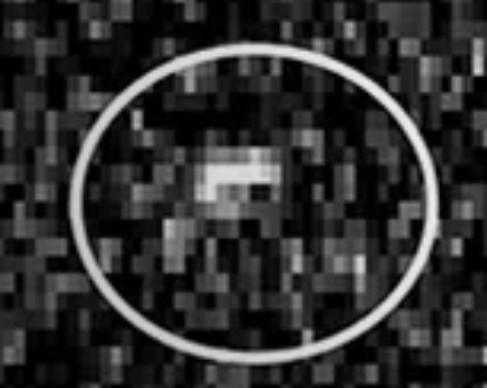
Image credit: NASA/JPL
2024-03-15 solar system
According to NASA, on April 13, 2029, Apophis will pass less than 20,000 miles (32,000 kilometers) from Earth's surface, closer than the distance of geosynchronous satellites. Although previously dubbed the Doomsday Asteroid, about 340 meters wide Apophis does not pose any danger of impact during close approach in 2029 as it will be visible with the unaided eye. Link to source 🔗
Moonquakes near Lunar South Pole
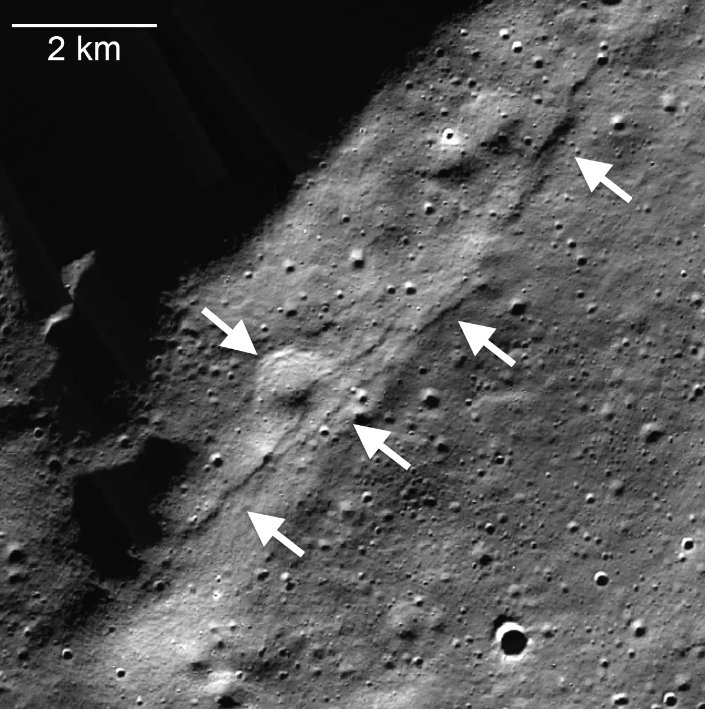
Image credit: NASA/LRO/LROC/ASU/Smithsonian Institution
2024-01-27 solar system
Moon is shrinking and torn by tidal forces from Earth. Evidence for seismic activity has been detected near candidate regions for the Artemis III mission scheduled for a crewed lunar landing. Such quakes can produce ground shaking strong enough for faults to slide or for piling up new thrust faults. The LROC image shows a cluster of lobate scarps (left pointing arrows) near the lunar south pole. A thrust fault scarp cut across an approximately 1-km diameter degraded crater (right pointing arrow). Link to source 🔗
SLIM Imaged by LROC
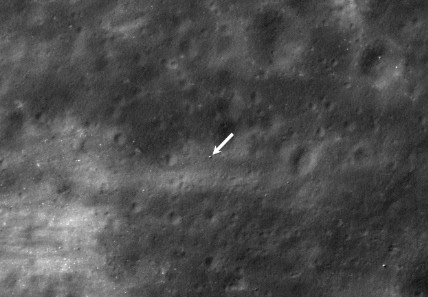
Image credit: NASA/Goddard/Arizona State University
2024-01-27 solar system
NASA’s Lunar Reconnaissance Orbiter captured this image of the JAXA SLIM lander on the Moon’s surface on Jan. 24, 2024. SLIM landed at -13.316° south latitude, +25.2510° east longitude, at an elevation of minus 912 meters. The image is 880 meters wide and lunar north is up. Link to source 🔗
Hubble finds Water in an Exoplanet's Atmosphere
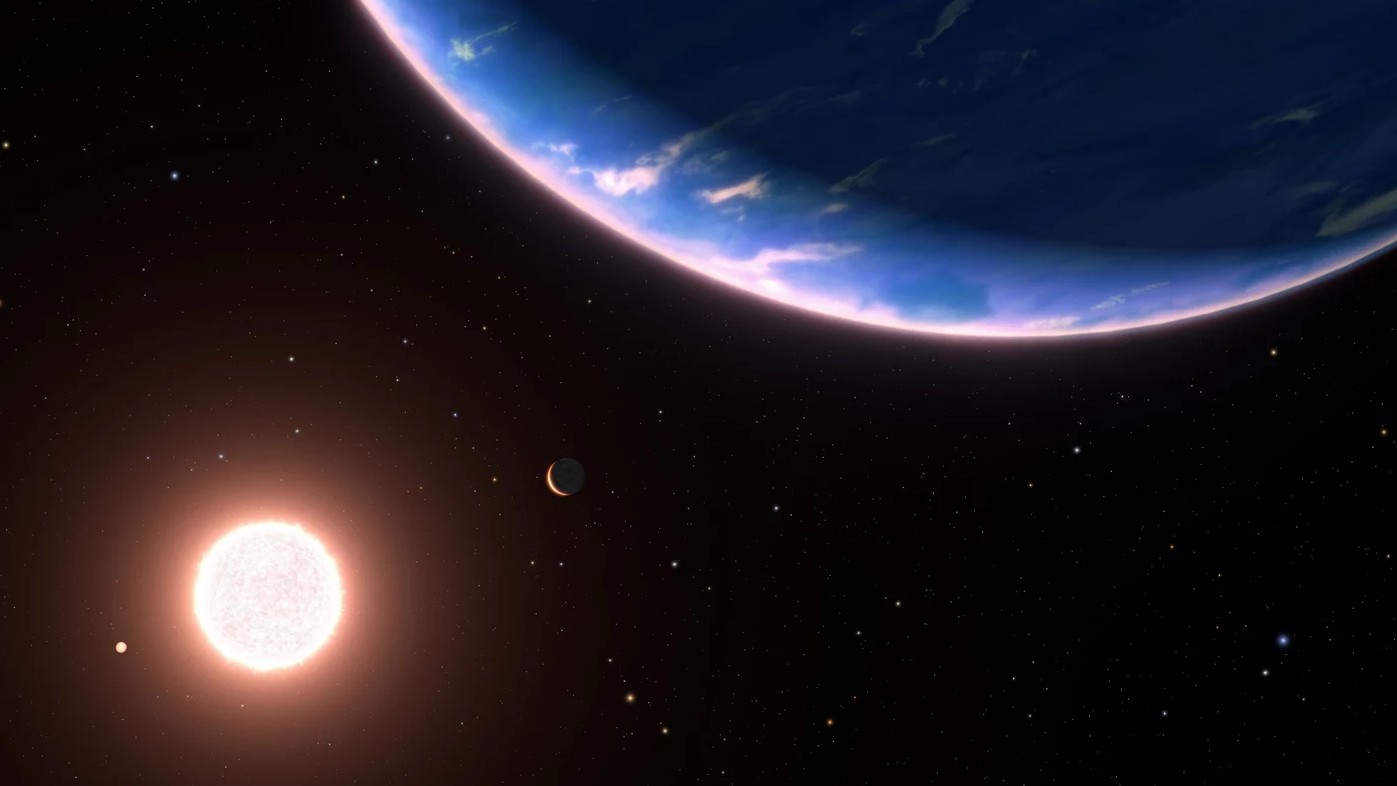
Image credit: NASA, ESA, Leah Hustak (STScI), Ralf Crawford (STScI)
2024-01-26 Exoplanets
Discovered in 2017, the Superterran planet GJ 9827 d is located some 97 light-years away in Pisces and may have a water-rich atmosphere in spite of being hotter than Venus because it orbits extremely close to it host star alongside two further known inner planets. Astronomers will further investigate with the help of the Hubble and James Webb space telescopes. Link to source 🔗
First Light from SLIM
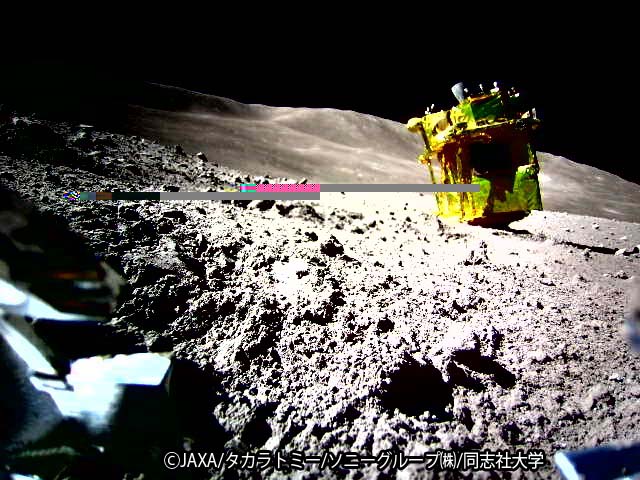
Image credit: JAXA/タカラトミー/ソニーグループ(株)/ 同志社大学)
2024-01-25 solar system
JAXAs lunar lander SLIM has been photographed by its small rover, the Lunar Excursion Vehicle 2 (LEV-2). The soft landing about 55 meters east of target point was completed at 1.4m/sec surpassing specifications. Though the solar panels were supposed to face upwards after landing, on the photo SLIM is shown with its main engine facing upwards, but JAXA hopes it will gather sunlight and restore power until local sunset on Feb 1st. Analysis so far has also revealed that one of the two main engines was lost due to some abnormality at an altitude of 50 meters just before landing. Both exploration rover robots are in good working condition. SLIM landed on the moon at 15:20 on January 19 UTC. Link to source 🔗
Backlog
No, we are not on Facebook but proudly on AstroBin with Mille Gracie to the author Salvatore Iovene:

GoTo Astropical on AstroBin
If anybody is interested in the night life of bats, here is a funny 1-minute MP4 video (24MB).
Legal
In case of abuse or hacking attempts, we reserve the right to report to providers, ISPs and legal authorities. The contents of this site is public, no hidden secrets. The data is backed up in regular intervals.
Cookies
This website does NOT send and use "cookies".
Privacy
Your visit is anonymous. The author processes merely the data that a web browser is typically sending back. The purpose is only for the [Visitors Online] section below.
Free Registration
In order for location dependent data to show correctly you need to register. In the interest of your privacy this website does not automatically retrieve your location via third party services, etc.
Compatibility
Website tested under Windows and Android only. Although largely compatible with smartphones this website is primarily designed for desktops, note books and tablets. This applies in particular to database tables. Double click on page top banners to remove them.
Monitor Calibration
Please adjust your monitor's gamma and contrast, etc. if you cannot distinguish all shades of gray. Click for an enlarged color pattern.

URL Request
If you do not wish to register (no problem) but need to see data for your location only once or so, then you can add the following string to the URL:
?lat=xx.xxx&lon=xxx.xxx&tzn=z.zz
where xx.xxx need to be replaced by your geographic coordinates, z.zz with your time zone. This data will not be stored.
This 'once-view' will work for most pages, such as Planisphere, Deepsky Observer, Ephemerides and Today Monitor.
 US, Ohio, Dublin
US, Ohio, Dublin US, California, Mountain View
US, California, Mountain ViewLast visit from: US

on page nikond5300.php using Windows O/S.
Unique visitors today: 20 (since 0:00 UTC) from:









Newest flag:  Monaco -- Welcome!
Monaco -- Welcome!
Total page views 5652 since 2024-05-01
from 84 different countries (excluding bots & idiots).



















































































Operating SystemsWindows: 2201Linux: 1294 Android: 966 iPhone: 526 Macintosh: 518 Other: 103 iPad: 29 Unknown: 13 Chrome OS: 1 Playstation: 1 |
Most Visitedindex.php: 812globe_index.php: 789 nikond5300.php: 545 binos.php: 406 timeslip.php: 353 hipparcos.php: 345 nexstar.php: 317 algol.php: 314 starref.php: 255 mpccoms.php: 146 |
Site Updates
- 2024-05-14 • JWST Images added to Top Page
- 2024-01-09 • Exoplanets with PHL/HWC
- 2023-12-27 • Tomytec Borg telescopes added.
- 2023-12-23 • Takahashi telescopes added.
- 2023-12-21 • Asteroid Dinkinesh & Didymos added.
- 2023-12-18 • Telescopes for AP updated
- 2023-12-02 • Libration calendar 2024 uploaded
- 2023-12-01 • Ephemeris updated for 2024
- 2023-11-16 • Libration data for 2024 updated
- 2023-11-14 • Review BKP150 updated
- 2023-11-13 • Review TS71SDQ updated
- 2023-09-18 • Page Optical Train added
- 2023-10-21 • New PDF brochure added
- 2023-09-18 • Review: Uranus-C added
- 2023-01-21 • EAA for Starters PDF added
- 2022-11-26 • Favorable Librations added
- 2022-11-26 • Libration calendar PDF2023 added
- 2022-11-25 • Online Libration calendar updated
- 2022-11-24 • Ephemerides updated for2023
- 2022-07-19 • Minima of Algol corrected
- 2022-06-28 • Periodic Table of Sensors added
- 2022-06-28 • Fixes in API Reference
- 2022-06-26 • Astrocam updates and corrections
- 2022-04-08 • Maintenance paused due to accident.
- 2022-02-05 • Android Apps added for download.
- 2022-01-16 • Lunar Imaging brochure added.
- 2021-12-30 • Overdue updates and fixes
- 2020-10-20 • Lunar Imaging site added
- 2020-08-25 • Review: ZWO ASI462MC
- 2020-03-05 • The Current Moon
- 2020-02-09 • Review: ZWO ASI290MM

Deepsky Overview
My Humble Gallery
Lunar Imaging
FOV Simulator
Astro Cameras
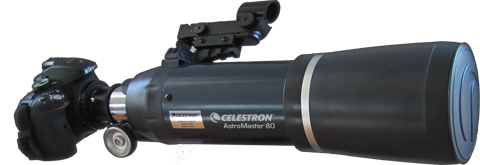
Let's Astrophoto
Telescopes for AP
Total Exoplanet Count: 5630
Kepler/K2: 3322 planetsTESS: 445 planets
Latest exoplanet around:
as of 2024-05-13
| Constellation | Draco |
| Distance | 95.20 parsec |
| Magnitude | 9.02 vis. |
| Spectral type | G V |
| Mass | 1.1 xSun |
| Radius | 1.05 xSun |
| Temperature | 5800°K |
| Known planet(s) | 1 |
Acton Sky Portal Observatory 2
Anglo-Australian Telescope 36
Apache Point Observatory 1
Arecibo Observatory 3
Atacama Large Millimeter Array (ALMA) 1
Bohyunsan Optical Astronomical Observatory 26
Calar Alto Observatory 20
Cerro Tololo Inter-American Observatory 5
CHaracterising ExOPlanets Satellite (CHEOPS) 3
CoRoT 35
European Southern Observatory 3
European Space Agency (ESA) Gaia Satellite 10
Fred Lawrence Whipple Observatory 6
Gemini Observatory 9
Haleakala Observatory 2
HATNet 67
HATSouth 73
Haute-Provence Observatory 66
Hubble Space Telescope 6
Infrared Survey Facility 1
James Webb Space Telescope (JWST) 1
K2 548
KELT 10
KELT-North 7
KELT-South 4
Kepler 2774
Kitt Peak National Observatory 1
KMTNet 91
KOINet 1
La Silla Observatory 284
Large Binocular Telescope Observatory 3
Las Campanas Observatory 29
Leoncito Astronomical Complex 1
Lick Observatory 36
Lowell Observatory 3
Mauna Kea Observatory 2
McDonald Observatory 31
MEarth Project 2
MOA 29
Multiple Facilities 18
Multiple Observatories 306
NASA Infrared Telescope Facility (IRTF) 1
Next-Generation Transit Survey (NGTS) 3
OGLE 101
Okayama Astrophysical Observatory 36
Palomar Observatory 2
Paranal Observatory 45
Parkes Observatory 2
Qatar 10
Roque de los Muchachos Observatory 32
South African Radio Astronomy Observatory (SAR 1
SPECULOOS Southern Observatory 1
Spitzer Space Telescope 4
Subaru Telescope 11
SuperWASP 113
SuperWASP-North 5
SuperWASP-South 32
Teide Observatory 1
Thueringer Landessternwarte Tautenburg 8
Transiting Exoplanet Survey Satellite (TESS) 445
TrES 5
United Kingdom Infrared Telescope 2
University of Canterbury Mt John Observatory 1
Very Long Baseline Array 1
W. M. Keck Observatory 188
WASP-South 11
Wide-field Infrared Survey Explorer (WISE) Sat 1
Winer Observatory 1
Xinglong Station 2
XO 6
Yunnan Astronomical Observatory 3
Next NEO Approach
2024 JK8 on 2024-May-19 16:58 UTC at 5.9574 LD
Random Objects
Gienah (53 Eps Cyg) in Cyg [HIP 102488]
Distance: 72 light-years, Magnitude: 2.48
Designated EPSILON in the constellation Cygnus, the 2nd-magnitude star Gienah is located in the wing of the "swan". The name is Arabic for "wing".
Star Chart | DSS IR Image 🔗279 G. Sagittarii (GJ 783 A ) in Microscopium
Distance: 20 light-years, Magnitude: 5.3
Gliese 783 (279 G. Sagittarii) is a binary star system which is approaching the sun at a velocity of about 129 km/s. At this rate, it will be 6.7 light years away in 41,100 years, and ten times brighter than now. The A-B pair's masses are 65%/24% solar and measure 66%/28% the radius of the sun. The two stars are separated by a semi-major axis of 56.3 AUs.
Star Chart | DSS IR Image 🔗

M67 (Open Cluster) in Cancer
Magnitude: 6.9
At 3.2 billion years, M67 is the oldest star cluster known and the oldest of all the Messier clusters. Containing some 500 stars, 100 of them similar to our Sun, this cloud contains no main sequence stars bluer than spectral type F and 150 white dwarf stars.
Star Chart | DSS IR Image 🔗Lynx (northern), area rank: 28

Located between Ursa Major and Gemini, the dim stars in this constellation describe a moderate arc. In the 17th century astronomer Johannes Hevelius introduced Lynx to fill up space between the constellations.
Star Chart46P/Wirtanen

Discovered on January 17, 1948, 46P/Wirtanen is a short period (5.4 years) returning comet belonging to the Jupiter family of comets with an estimated diameter of 1.2 kilometers. It boasts a higher level of activity than expected for its nucleus size and emits more water vapor than it should. It was the original target for ESA's Rosetta spacecraft which missed the launch window and changed its destination to 67P. On December 16, 2018 the comet will pass Earth at about 30 lunar distances reaching a forecast magnitude peaking at 3.0 during the close approach or 7.5 visually in a worst case.
Ixion (TNO/Plutino)
Semi-major: 39.59054 AU, Size: 727 km

Discovered in 2001, 28978 Ixion is a plutino object with an assumed diameter of 650 km and moderate orbit inclination completing one cycle in about 250 years at a mean distance of 39.68 AU. The rotation peroid is yet unknown, but shows subtle changes in brightness as result of axial rotation. It shines moderately in red.
Nix (moon of Pluto)

Nix is the third largest natural satellite of Pluto discovered in 2005 by the Hubble Space Telescope. Nix has been measured to be 54 x 41 x 36 km in diameter, indicating a very elongated shape, and a very high geometric albedo.
HD 142245 b (in Serpens)
Mass: 3.07 xJup
SMA: 2.78 AU
Period: 1299 days
Distance: 97.2305 parsec
Category: Hot Jovian
ESI: 0.363542
Android Astronomy Apps
Tweets by astropical4
3D Visualizations
Solar System
Planets
Mercury | Venus | Venus Radar | Earth | Earth Melted | Earth Cretaceous | Mars | Mars Terraformed | Jupiter | Saturn | Uranus | Neptune | Planet Nine (hypothetical)Dwarf Planets
Ceres | Pluto | Haumea | Makemake | Eris | KBOAsteroids
Vesta | Pallas (fictive) | Juno (fictive) |Planetary Moons
Ariel (Uranus) | Callisto (Jupiter) | Charon (Pluto) | Dione (Saturn) | Enceladus (Saturn) | Europa (Jupiter) | Ganymede (Jupiter) | Iapetus (Saturn) | Io (Jupiter) | Mimas (Saturn) | Miranda (Uranus) | Moon (Earth) | Oberon (Uranus) | Rhea (Saturn) | Tethys (Saturn) | Titan (Saturn) | Titania (Uranus) | Triton (Neptune) | Umbriel (Uranus)Comets
67P/Churyumov-Gerasimenko (takes a minute to download)Exoplanets
Exoplanets
Rocky Terran | Ocean Terran | Hot Terran | Warm Terran | Desert Terran | Water Terran | Second Earth | Cloud Planet | Jovian Planet | Saturnian PlanetEarth
Beautiful Earth
Earth in hi-res (can take a minute to download)Earth at Night
Panoramic view (can take a minute to download)








